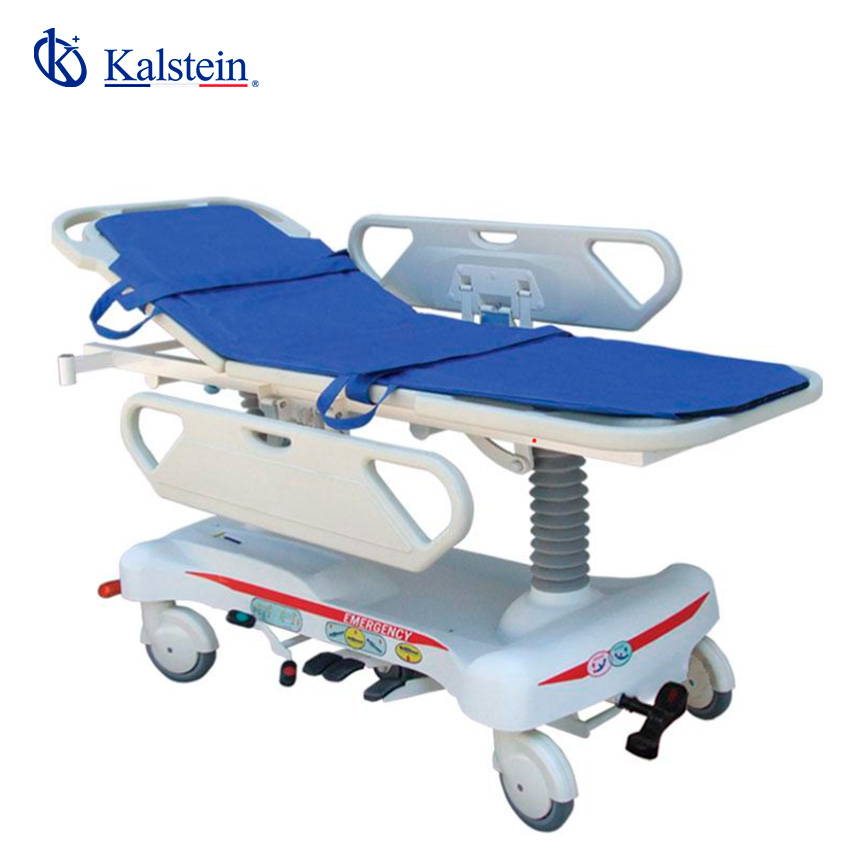In the medical field, efficiency and improved patient care are crucial aspects. Four-function hydraulic transfer stretchers have revolutionized the way medical professionals transfer and treat their patients.
In this article, we will compare the four-function hydraulic transfer stretcher from Kalstein with its main competitors, highlighting their advantages and disadvantages to help you make an informed decision.
We understand that you need equipment that delivers maximum value to your laboratory. We invite you to visit https://kalstein.pl/category-product/medical-line/medical-transfer-stretcher/, to immerse yourself in our universe of cutting-edge technology equipment. Our prices are competitive and accessible, we combine the convenience of online shopping with the guarantee of an exceptional product. Because you deserve the best, we create and offer top-tier laboratory equipment. Make your choice today, where science comes to life. https://kalstein.pl/
Innovation and Technology
Kalstein’s four-function hydraulic transfer stretcher stands out for its innovative design and advanced technology. With a high-precision hydraulic system, it allows for smooth and efficient adjustments of height, tilt, and other settings. This stretcher is ideal for clinical environments that require quick and precise adjustments.
On the other hand, competitors like Stryker and Hill-Rom also offer high-quality stretchers but often lack the same hydraulic precision as Kalstein. Although they are robust and durable, they may not provide the same level of fine adjustment, which can affect efficiency in medical practice and patient treatment.
Comfort and Ergonomics: A Priority at Kalstein
Patient comfort is a priority in the design of Kalstein’s stretcher. Its padded surface and ergonomic design ensure that patients are comfortable during transfer and treatment. Additionally, adjustable side rails and headrests provide extra support, enhancing the patient experience.
While competitors also offer comfort features, they sometimes do not achieve the same level of ergonomics. Some models may be too firm or lack sufficient customizable adjustments, which can be a significant disadvantage in situations where patient comfort is essential.
Durability and Maintenance: A Comparative Analysis
Durability is another crucial aspect to consider. Kalstein’s stretcher is built with high-quality materials that ensure a long lifespan and resistance to wear and tear. Moreover, its design facilitates maintenance, allowing clinics to keep the stretcher in optimal condition with minimal effort.
In comparison, stretchers from brands like Medline and Invacare are also known for their durability but often require more intensive maintenance. This can translate to more time and resources spent on keeping the stretchers operational, potentially impacting efficiency in medical practice and patient care improvement.
Flexibility and Adaptability in Clinical Environments
Flexibility and adaptability are essential in dynamic clinical environments. Kalstein’s stretcher offers a wide variety of configurations and adjustments that allow its use in multiple situations, from transfers to complex medical procedures. This versatility is a significant advantage for clinics needing equipment that can quickly adapt to different needs.
In contrast, some competitor stretchers may be less flexible regarding adjustments and configurations. While they may be suitable for specific situations, their lack of adaptability can be a limitation in clinical environments requiring versatility.
Cost-Efficiency and Return on Investment
Cost is always an important consideration. Kalstein’s stretcher, although it may have a higher initial price, offers excellent value for money due to its durability, low maintenance, and high efficiency. In the long run, this can translate to a higher return on investment for clinics.
On the other hand, competitor stretchers may be more affordable initially, but their maintenance costs and lower durability can result in additional expenses over time. It is important to consider not only the initial cost but also the operational costs over the equipment’s lifespan.
Testimonials and Practical Results in Clinical Practice
Finally, testimonials and practical results can provide valuable insights into the effectiveness of the stretchers. Users of Kalstein’s stretcher often praise its ease of use, comfort, and efficiency in patient treatment. These positive aspects are backed by studies and clinical evaluations that show significant improvements in patient outcomes.
While competitors also receive positive feedback, it is common to hear concerns about the lack of fine adjustments and the need for frequent maintenance. These factors can influence the decision of clinics looking to optimize efficiency in medical practice and improve patient care.
Conclusion
In summary, Kalstein’s four-function hydraulic transfer stretcher stands out in several key aspects, including technological innovation, comfort, durability, flexibility, and cost-efficiency. Although its competitors also offer high-quality products, Kalstein provides significant advantages that can make a difference in a clinical setting.
Considering all these factors, it is evident that Kalstein’s stretcher is a superior choice for clinics aiming to significantly improve efficiency and patient care.

